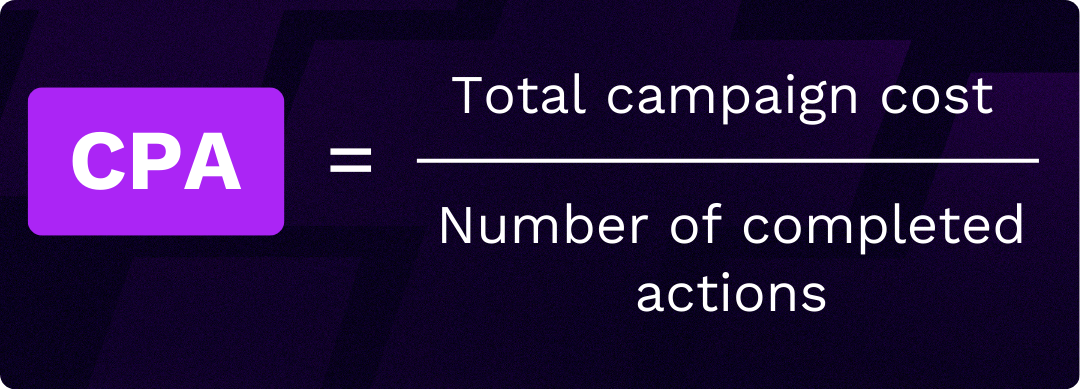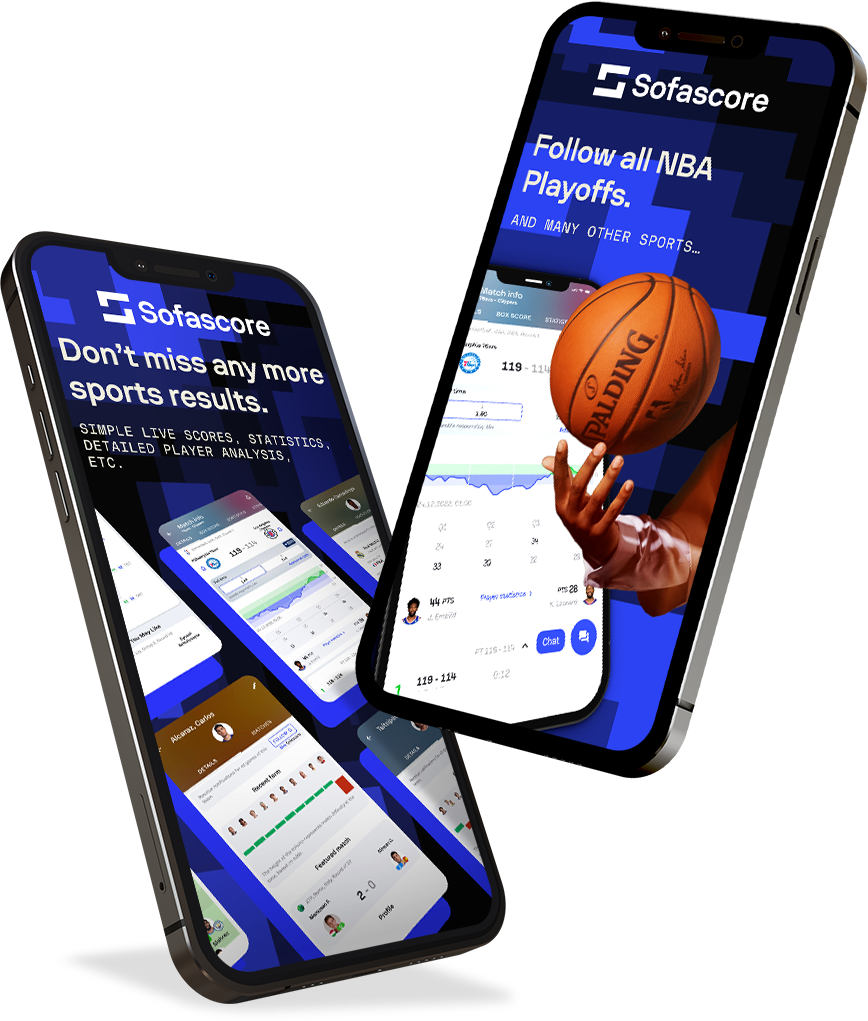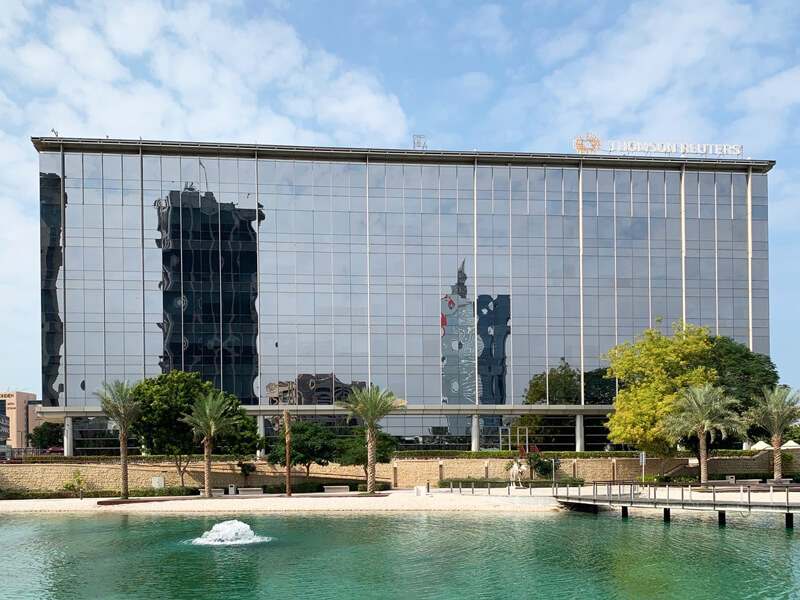Cost Per Action (CPA): Definition, Calculation & Optimization
Introduction
Cost Per Action (CPA) is a key metric in digital marketing, especially in mobile and web acquisition. It reflects the average cost paid to get a user to complete a specific action (sign-up, purchase, subscription, etc.).
Unlike CPM (Cost Per Mille) or CPC (Cost Per Click), CPA is purely performance-based, making it a powerful model for optimizing advertising spend and maximizing ROI.
But how should you interpret CPA? What factors impact its cost? And how can it be improved? This article breaks down everything you need to know about CPA and its role in user acquisition.
How to calculate CPA
The formula for Cost per Action is straightforward:
Cost per action = Total campaign cost / Number of completed actions

Example
If a campaign costs $5,000 and generates 250 conversions (purchases, sign-ups, etc.), the CPA would be:
CPA= 5000 / 250=20$ per action
Why is CPA important in mobile acquisition?
- Cost control: Unlike CPM, where advertisers pay for impressions regardless of performance, CPA ensures you only pay when a specific marketing objective is achieved.
- More accurate insights: CPA helps identify which channels and campaigns are truly delivering value. It makes comparing creatives, messages, and audience segments more intuitive.
- Budget optimization: By focusing on performance, CPA makes it easier to shift spend toward the best-performing platforms and audiences , improving overall efficiency.
- ROI-driven strategy: Since you’re only paying for actual conversions, it’s easier to measure return on investment and align advertising spend with precise business goals.
But cost per action isn’t without its challenges.
Limitations of CPA:
- Potentially high costs: CPA can be less predictable and sometimes more expensive, especially if the targeted action is harder to achieve.
- Dependence on tracking and attribution: Poor tracking can distort results and make campaign optimization difficult.
- Limited volume risk: Focusing too much on CPA may narrow your reach by limiting access to new audiences.
What’s the average CPA?
Cost per action varies widely depending on several factors:
- Industry sector: An e-commerce app won’t have the same CPA as a dating app.
- Type of action targeted: A lead form submission will generally cost less than a completed purchase.
- Acquisition channel: Search, Social Ads, Display, and Native all yield very different CPA levels.
- Geography and market: CPA in countries like the U.S. or Japan tends to be higher than in emerging markets.
CPA chart (installs, purchase, subscription) by industry
Source: Business of apps
Comparing CPA with other KPIs
CPA vs. CPM (Cost Per Mille)
CPM reflects the cost for 1,000 ad impressions. It’s primarily used for awareness and visibility campaigns, but it doesn’t guarantee any interaction or conversion from users.
Why it matters:
CPM helps increase campaign reach, but without guaranteed business impact. In contrast, cost per action ensures that ad spend is directly tied to measurable results.
CPA vs. CPC (Cost Per Click)
CPC measures the cost of each click on an ad, tracking initial user engagement. However, a click doesn’t necessarily lead to a meaningful action like a purchase or sign-up.
Why it matters:
A low CPC may seem attractive, but if those clicks don’t convert, CPA will remain high. Optimization must therefore consider the entire user journey.
CPA vs. CPI (Cost Per Install)
CPI is mainly used in mobile acquisition and only considers app installs. But an install alone doesn’t guarantee user engagement or monetization.
Why it matters:
CPA goes beyond the download to measure post-install actions (purchases, subscriptions), offering a clearer picture of true user value.
In short, cost per action is a performance-driven model that allows advertisers to pay only for actions that directly impact their business goals.
How to optimize Cost per Action
A high cost per action can reduce campaign profitability. Here are a few best practices to bring it down:
1. Improve audience targeting
Strong targeting attracts more qualified users.
- Use lookalike audiences to reach profiles similar to existing customers.
- Segment audiences by intent level (cold vs. warm prospects).
- Test different channels to find the best cost-to-conversion ratio.
2. Optimize ad creatives
Impactful ads lower CPA by improving conversion rates.
- Test multiple formats (videos, carousels, stories, UGC).
- Use clear and persuasive messaging with strong CTAs.
- Tailor creative content to each platform (TikTok ≠ Meta ≠ Google).
3. Work on user experience (UX & CRO)
A streamlined website or app improves conversion and lowers CPA.
- Simplify the user journey (fewer steps to convert).
- Improve page or screen load times.
- Offer incentives (discounts, free trials, limited-time offers).

Do not hesitate to contact with our teams
Addict can support you to improve your performance.
4. Leverage data and automation
Optimization tools help adapt strategy in real time.
- Analyze post-click behavior to understand where users drop off.
- Use Smart Bidding strategies on Google & Meta to automate bidding.
- Try dynamic bidding to adjust budgets in real time based on performance.
5. Clearly define your conversion goals
CPA depends on the action you define as a conversion. Choosing the right one is essential for maximizing profitability.
- Focus on revenue-driving actions rather than broad or low-commitment goals.
- Adjust CPA targets based on the actual value of each conversion to avoid overspending on low-impact actions.
- Adapt goals to the user lifecycle to avoid slowing acquisition by restricting volume.
Conclusion
CPA is a performance-based buying model that gives advertisers control over ad spend based on real conversions. Its effectiveness, however, depends on continuous optimization across targeting, creatives, and user experience, along with careful budget and bid management. A structured approach helps maintain a competitive CPA and turn it into a profitable growth lever.



